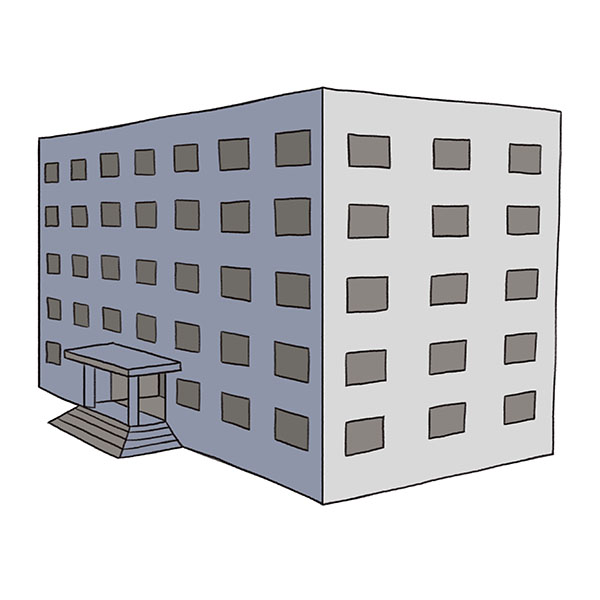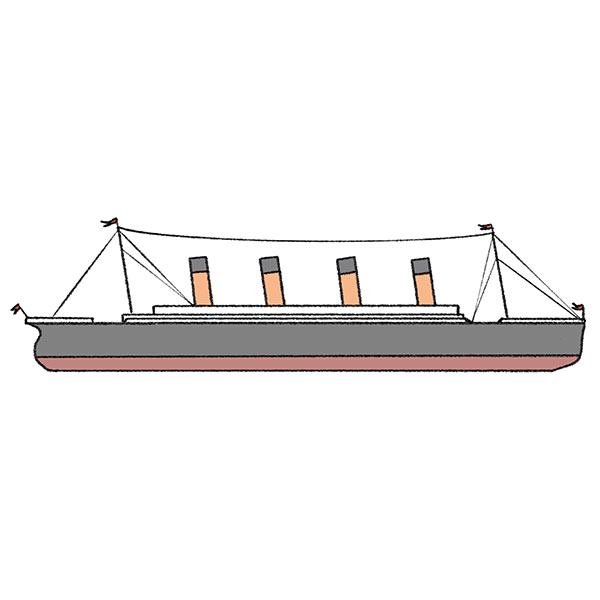How to Draw Cyborg
Stepping into a realm where technology meets humanity, let me guide you on how to draw Cyborg. We’ll transform his sophisticated cybernetic look into simple steps. This tutorial is meticulously tailored to assist learners of all levels in portraying Cyborg’s chibi version, blending his mechanical prowess with lovable features.
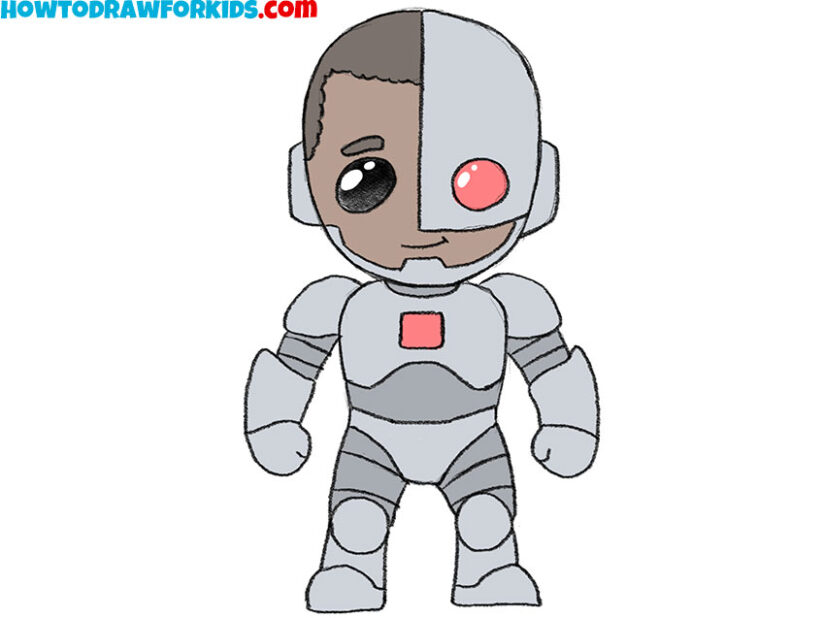
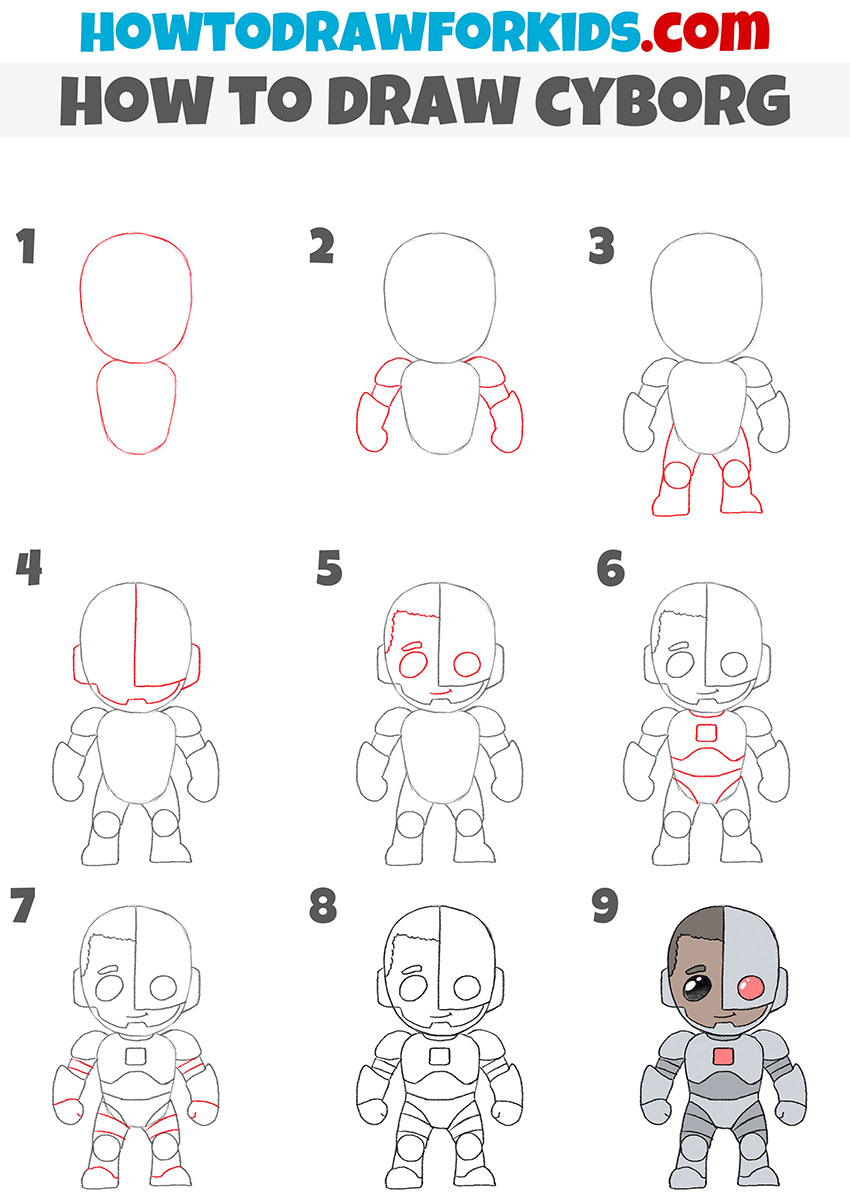
How to Draw Cyborg: Basic Information
Welcome to my tutorial designed to show you how to draw Cyborg in a fun, accessible way. With this lesson, we’re transforming the tech-savvy titan into a cute chibi character that you can bring to life with just a few simple steps. My aim is to make drawing approachable, turning complex forms into playful art.
I’ve broken down Cyborg’s mechanical intricacies into clear, manageable shapes, maintaining his heroic spirit in a lovable chibi style. You’ll learn to draw his cybernetic eye and armor with ease, ensuring that your rendition of Cyborg is both accurate and expressive, capturing his strength in a smaller scale.
By the time you draw Cyborg to completion, you’ll see just how rewarding it can be to transform a formidable hero into something so endearing. This guide is not just about the final drawing, but also about enjoying the process and developing your skills along the way. Let’s start this creative journey together!
Cyborg Drawing Tutorial
Materials
- Pencil
- Paper
- Eraser
- Coloring supplies
Time needed: 30 minutes
How to Draw Cyborg
- Depict head and body
Start your drawing with the head by creating an oval shape that’s wider at the top and narrows at the chin. Directly beneath the head, draw a smaller oval slightly wider at the top and tapering down.
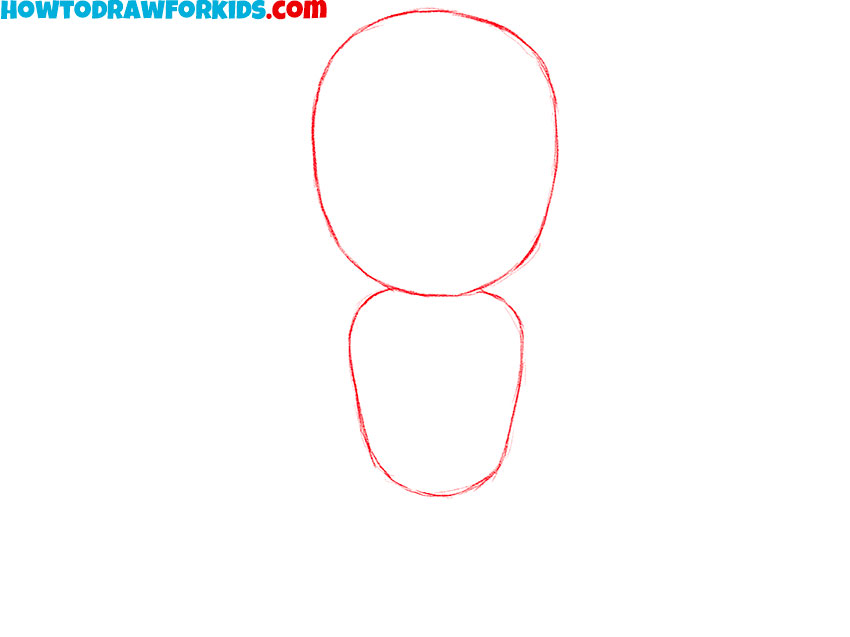
- Draw Cyborgs arms
Start by sketching two ovals on each side of the torso for the upper arms, making them bulky. Add another pair of ovals for the forearms, ensuring they are proportionate to the upper arms and wrists.
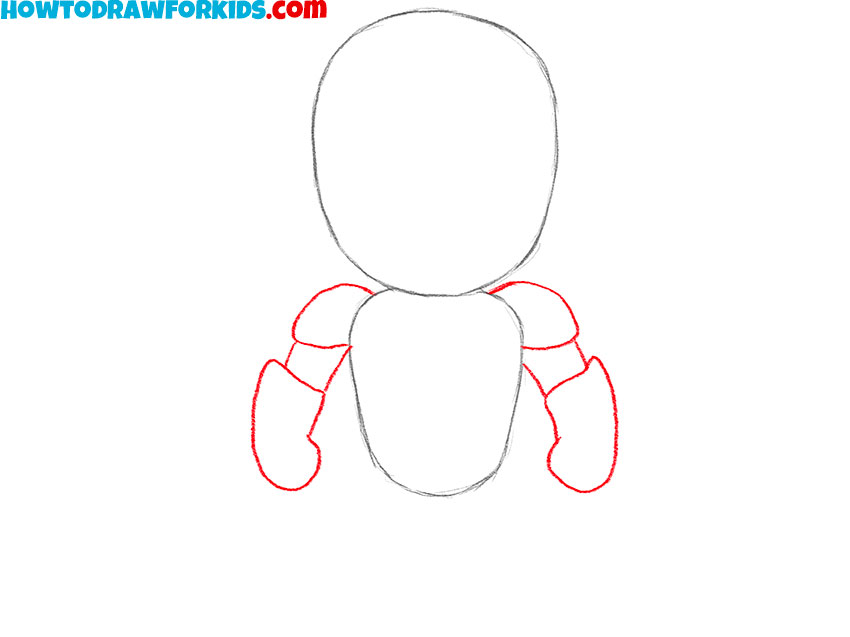
- Depict the legs
Visually, the Cyborg’s legs consist of three parts, and this is very close to reality. However, you can draw this as solid shapes and add circles for the knee joints.

- Add the facial division lines
A regular right angle will help you separate the only visible part of Cyborg’s human body. Also in this step draw the lower edges of the helmet and the metal analogues of the ears.

- Outline the facial features
Now, outline the essential features of Cyborg’s face. Emphasize the different shapes of the eyes – it’s a bit like a Two-Face drawing lesson.
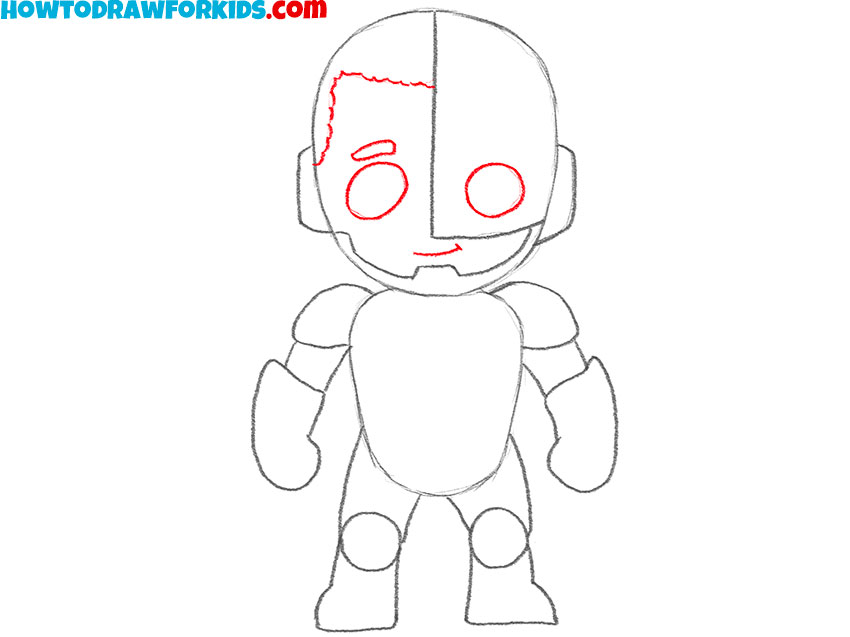
- Detail the body’s mechanical parts
With the body’s central lines in place, begin adding the mechanical details. Sketch rectangles and other geometric shapes to form the chest piece, abdominal plates, and shoulder pads.

- Enhance the costume with additional details
Refine the costume by adding more intricate mechanical details, such as bolts, seams, and panel lines. These small touches will make the character’s cybernetic components look more realistic.
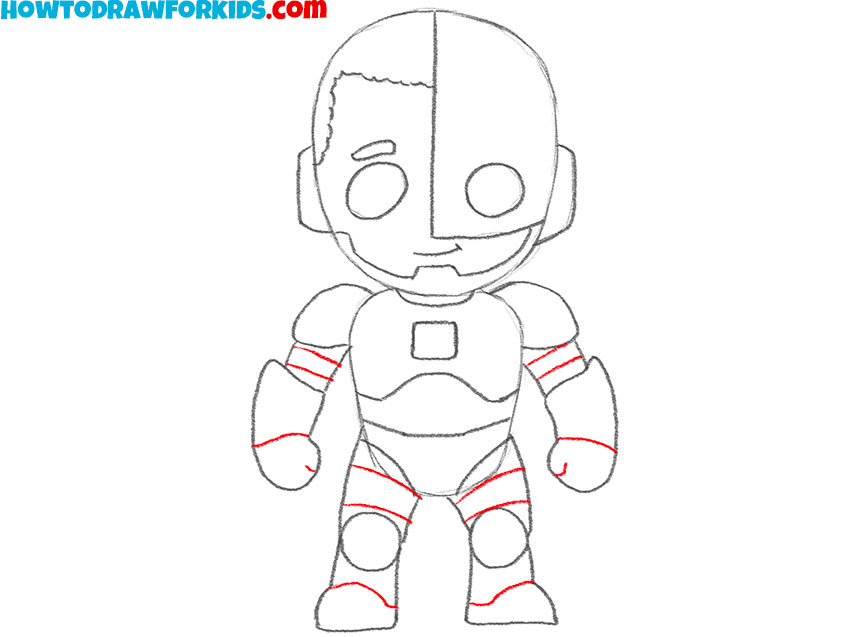
- Draw the parts of the costume.
Go over the outlines of the mechanical parts, making them more defined and bold. This is also the time to add any final touches, such as additional layers of armor or more defined panel lines.
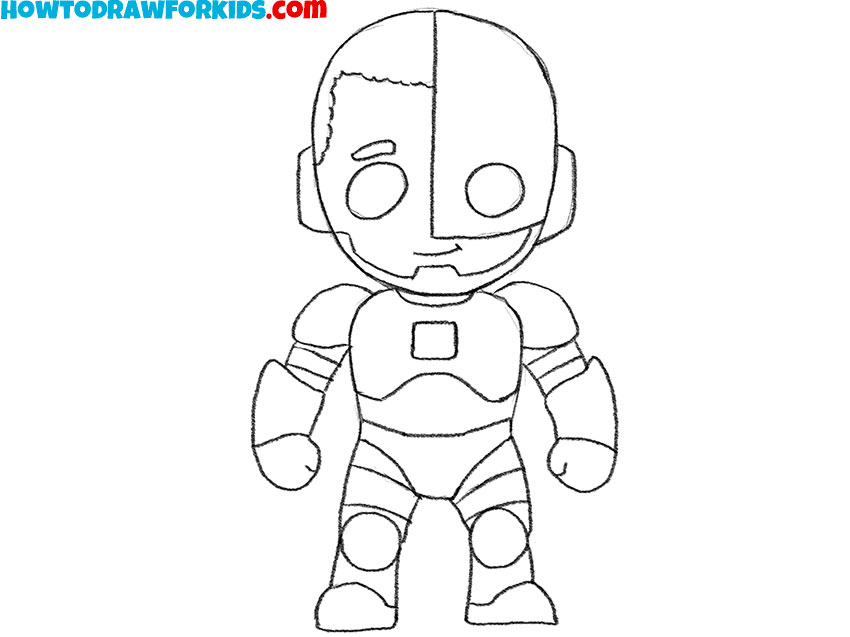
- Color the drawing.
The final step is to add color to your drawing. Cyborg typically has a color scheme that reflects his steel and mechanical nature—shades of gray, silver, and occasionally, accents of red or blue.
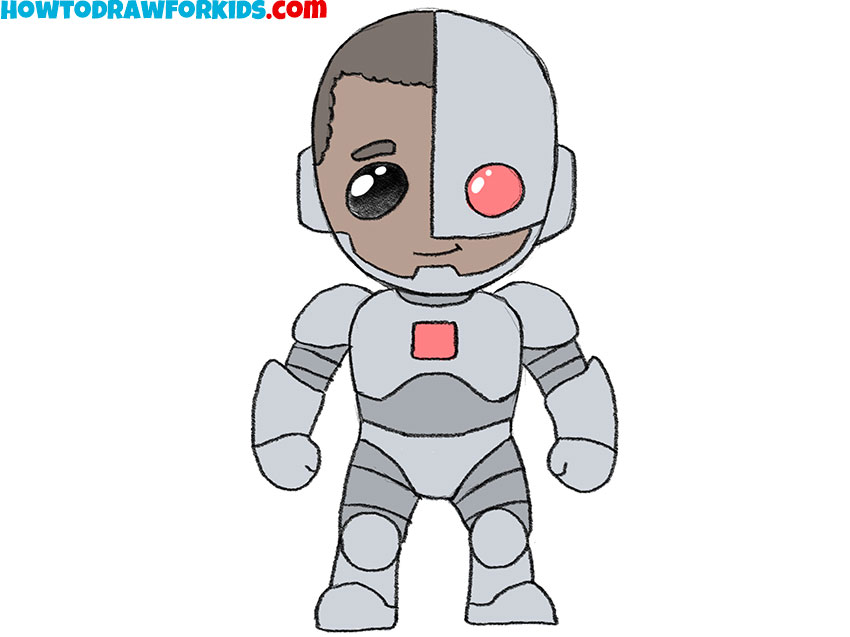
How to Draw Cyborg: Video Tutorial
Additional Content
I’ve prepared a free PDF file that simplifies this Cyborg drawing lesson into a concise guide. Available for download, it allows you to practice drawing Cyborg’s chibi form anytime, anywhere, without needing an internet connection, making it an ideal resource for on-the-go learning and revision.
This downloadable guide breaks down the tutorial into manageable steps, focusing on the essentials to help you master the art of drawing Cyborg in an adorable, approachable style. It’s perfect for artists who prefer to disconnect from the digital world and immerse themselves in practice, offering a straightforward path to improvement.
Ensure you grab this PDF to support your artistic endeavors; it’s designed to be a helpful companion that enhances your drawing skills. Carry it with you as a quick reference tool, allowing you to dive back into drawing Cyborg whenever inspiration strikes, ensuring continuous progress in your artistic journey.
Steering Clear of Cyborg Drawing Mistakes
As we wrap up our exploration into the chibi rendition of Cyborg, it’s vital to pause and reflect on the hurdles that may have tripped us up along the way. Below, I’ve listed some common mistakes encountered during this lesson, providing insight into how to avoid these pitfalls in your artistic journey.
- Overcomplicating Details: Attempting to include every mechanical detail can overwhelm the chibi simplicity. Aim for balance, capturing the essence without clutter.
- Proportion Missteps: Keeping Cyborg’s chibi proportions accurate is key; oversized heads are charming, but don’t underplay the body too much, or you’ll lose the heroic stance.
- Ignoring the Human Element: Even as a cyborg, the character’s human side should shine through. Don’t let the technology overshadow the personality in his expression and posture.
- Inconsistent Light Sources: When adding shadows and highlights, consistency with the light source ensures the drawing looks cohesive and more three-dimensional.
- Rushing the Process: Patience is a virtue in art. Rushing may lead to errors in form and detail that detract from the final piece.
Each challenge we overcome not only betters our skills but also deepens our connection to our creative selves. Carry forward the knowledge gained here, and let it guide you as you continue to draw, explore, and imagine.
From Single Character to Dynamic Scenes
Venturing further into the artistic journey after mastering the chibi version of Cyborg offers an exciting array of possibilities for growth and exploration. Here are a few avenues to explore that will not only enhance your abilities but also enrich your portfolio with diverse and dynamic artworks.
- Branch Out with Backgrounds: Adding detailed environments around your chibi Cyborg can elevate your piece, whether it’s the inside of a futuristic lab or the dark alleys of Gotham.
- Introduce Other Characters: Draw Cyborg interacting with other heroes or villains. This not only adds a narrative layer to your artwork but also allows you to practice drawing a variety of figures.
- Master Dynamic Poses: Push your skills further by depicting Cyborg in mid-battle or flying through the air. Capturing movement will bring energy and excitement to your chibi characters.
- Play with Colors and Textures: Experiment with different coloring techniques to highlight Cyborg’s metallic textures and human features, enhancing the visual appeal of your drawings.
- Create Your Comic Panels: Try placing your characters in comic book panels, telling a short story or action sequence. This will challenge you to think about composition, pacing, and storytelling in your art.
By embracing these next steps, you invite not just improvement but transformation into your artistic practice. Each new element you incorporate, from detailed backgrounds to dynamic interactions, not only diversifies your artwork but also deepens your engagement with the creative process.
Conclusion
As we conclude our lesson on drawing Cyborg, I invite you to explore the diverse range of tutorials available on my website. From capturing the rustic charm of a farmhouse to the dynamic leap of a kangaroo, there’s a world of subjects waiting to spark your creativity and refine your drawing skills.
Stay connected and never miss an update by following my social media channels. Your feedback and requests are the compass that guides our journey through art, so please, share your thoughts and desires for future tutorials beneath this lesson. Together, we’ll continue to map out new territories of creativity.


